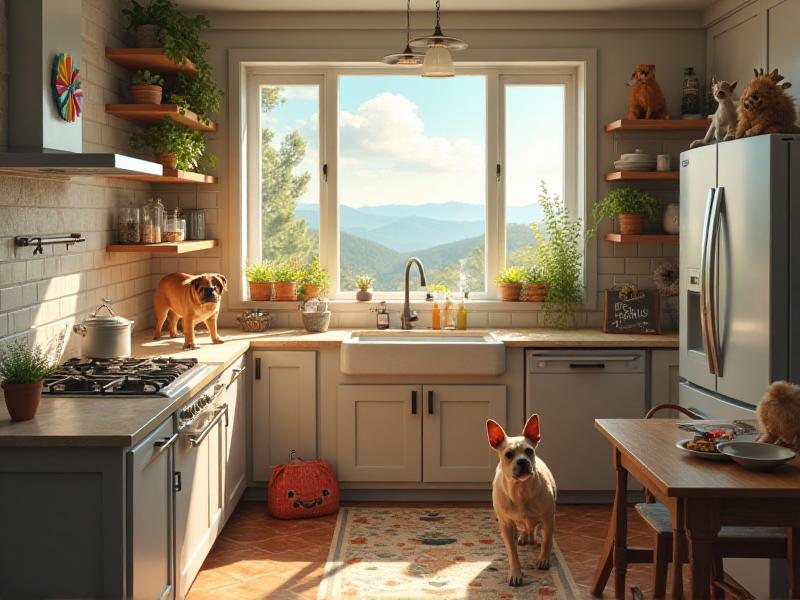How to Create a Kitchen That’s Both Stylish and Functional
1. Start with a Clear Vision and Layout
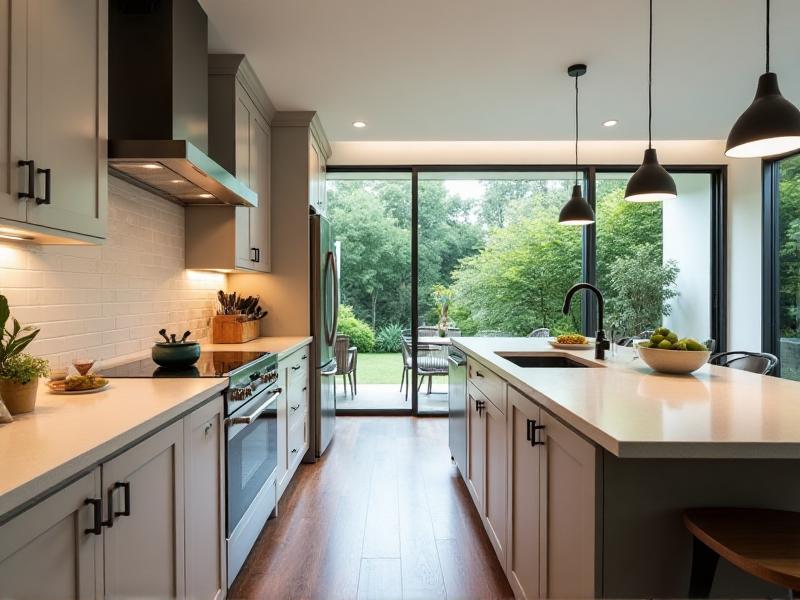
Creating a kitchen that is both stylish and functional begins with a clear vision. Before diving into design choices, consider how you use your kitchen. Are you an avid cook who needs ample counter space? Do you entertain often and require a social layout? Sketch out a rough floor plan that includes the work triangle—the relationship between the sink, stove, and refrigerator. This will ensure efficiency in your kitchen’s flow. Once the layout is set, you can focus on aesthetics, such as color schemes and materials, that align with your personal style.
2. Choose the Right Materials for Durability and Style
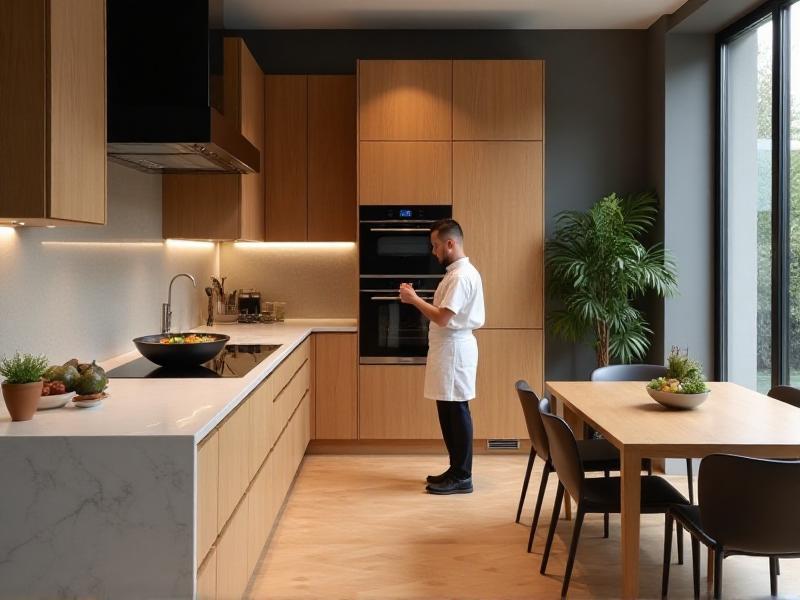
Selecting the right materials is crucial for a kitchen that looks great and stands the test of time. Countertops, for instance, should be both durable and visually appealing. Quartz and granite are popular choices due to their resilience and variety of finishes. For cabinetry, consider solid wood or high-quality laminates that resist wear and tear. Don’t forget about flooring—ceramic tiles or hardwood are excellent options that combine style with practicality. By choosing materials that balance aesthetics and functionality, you’ll create a kitchen that’s both beautiful and long-lasting.
3. Optimize Storage Solutions
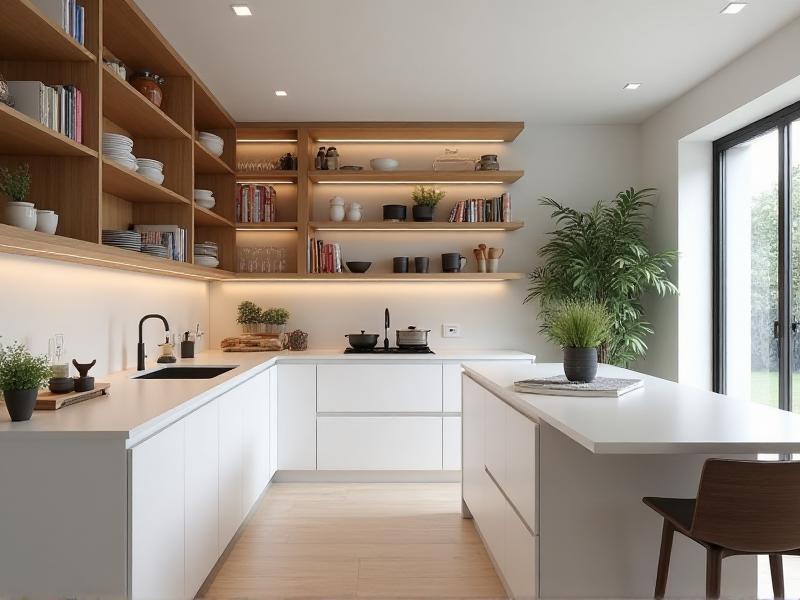
A functional kitchen is one that maximizes storage without sacrificing style. Think beyond traditional cabinets and explore innovative solutions like pull-out pantry shelves, corner drawers, and overhead racks. Open shelving can also add a modern touch while keeping essentials within reach. Customizable organizers for drawers and cabinets can help keep utensils, spices, and cookware neatly arranged. By incorporating smart storage solutions, you’ll maintain a clutter-free space that’s as practical as it is stylish.
4. Incorporate Lighting for Ambiance and Functionality
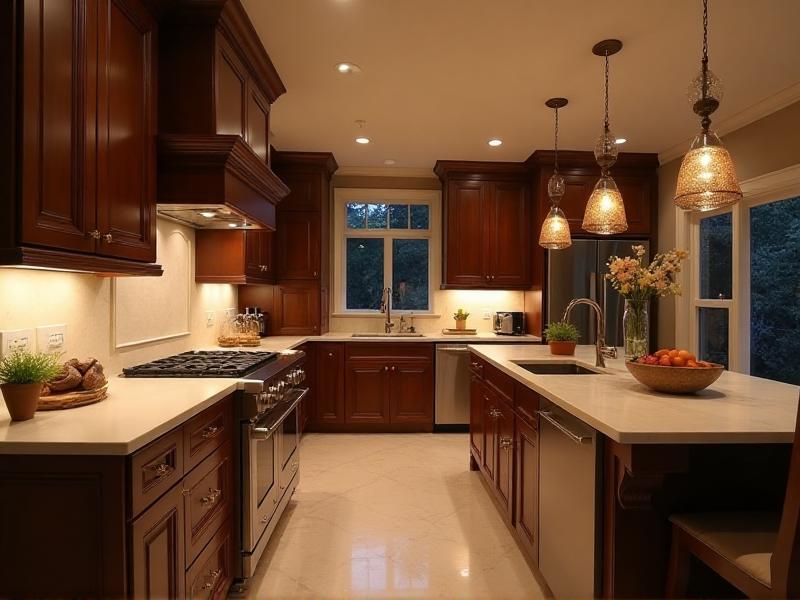
Lighting plays a dual role in kitchen design—it enhances the ambiance and ensures functionality. Start with task lighting under cabinets to illuminate countertops for food prep. Pendant lights above islands or dining areas can add a decorative element while providing focused light. Don’t overlook ambient lighting, such as recessed ceiling lights, to create a warm and inviting atmosphere. Dimmable lights are a great option for adjusting the mood depending on the time of day or occasion. A well-lit kitchen is not only practical but also visually stunning.
5. Select Appliances That Blend Form and Function
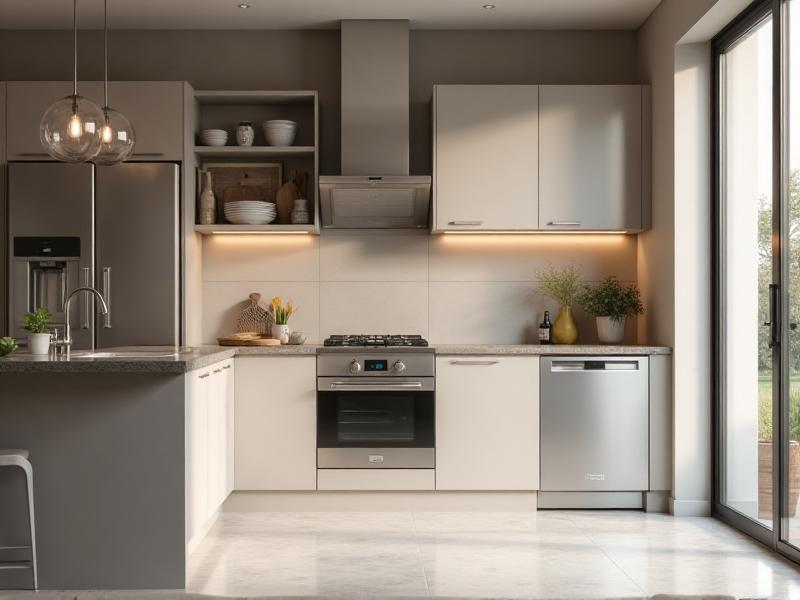
Modern kitchens are as much about the appliances as they are about design. Choose appliances that complement your kitchen’s aesthetic while offering advanced functionality. Stainless steel appliances are timeless and versatile, while integrated models can be concealed behind cabinetry for a seamless look. Consider energy-efficient options to reduce utility bills and environmental impact. Smart appliances, such as Wi-Fi-enabled ovens and refrigerators, can add convenience and a touch of luxury. By selecting the right appliances, you’ll enhance both the style and efficiency of your kitchen.
6. Add Personal Touches with Decor and Accessories

Personalizing your kitchen is the final step in creating a space that feels uniquely yours. Incorporate decor elements like artwork, plants, or decorative bowls to add character. Choose accessories that are both functional and stylish, such as a statement backsplash or a vintage-inspired faucet. Textiles like curtains, rugs, and dish towels can introduce color and texture. Don’t be afraid to mix and match styles to reflect your personality. A well-decorated kitchen is one that feels inviting and lived-in.
7. Maintain a Balance Between Open and Closed Spaces

Striking the right balance between open and closed spaces is key to a functional and stylish kitchen. Open shelving can showcase beautiful dishware, but too much can lead to clutter. Similarly, too many closed cabinets can make the space feel cramped. Aim for a mix of both—use closed cabinets for items you want to hide and open shelves for decorative or frequently used items. Glass-front cabinets are another great option, offering a glimpse of your belongings while keeping them protected. This balance ensures your kitchen remains organized and visually appealing.
8. Prioritize Ergonomics for a Comfortable Cooking Experience

Ergonomics is often overlooked in kitchen design, but it’s essential for a comfortable cooking experience. Ensure that countertops are at the right height to prevent strain, and place frequently used items within easy reach. Consider the placement of appliances—for example, a wall oven at eye level can reduce bending. Pull-out cutting boards and adjustable-height islands can also enhance functionality. By prioritizing ergonomics, you’ll create a kitchen that’s not only stylish but also a joy to work in.
9. Embrace Trends While Staying Timeless
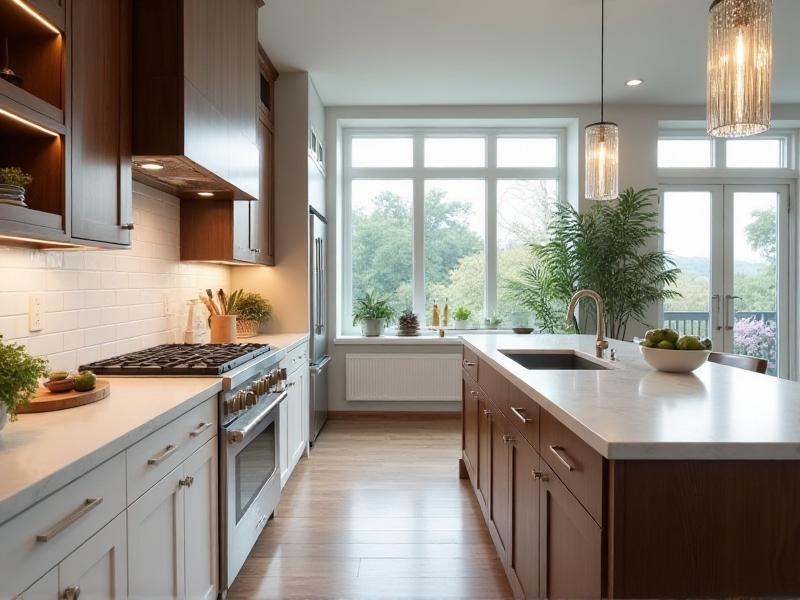
While it’s tempting to follow the latest kitchen trends, it’s important to strike a balance between modern and timeless elements. For example, subway tiles and shaker-style cabinets are classic choices that never go out of style. You can incorporate trends through smaller, easily changeable items like hardware or lighting fixtures. This approach allows you to update your kitchen’s look without a complete overhaul. A timeless design ensures your kitchen remains stylish for years to come.
10. Create a Focal Point with a Statement Feature
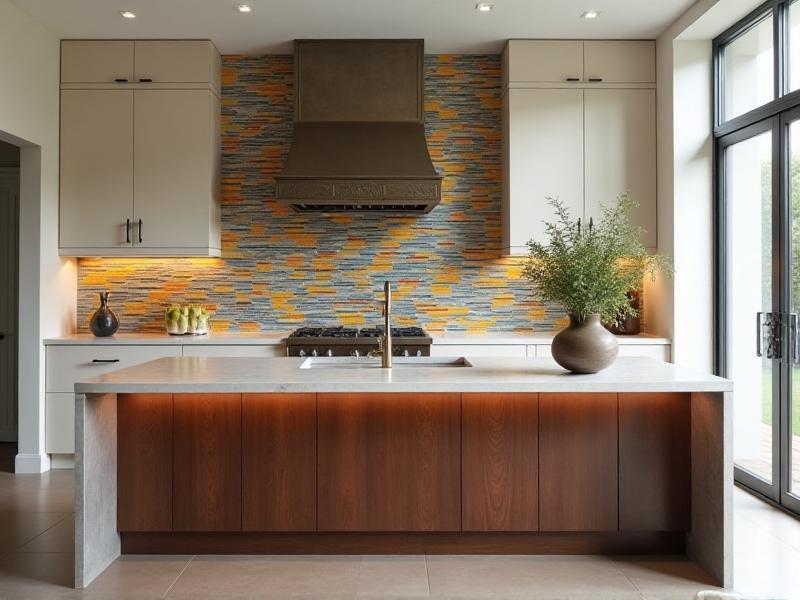
Every stylish kitchen needs a focal point that draws the eye and anchors the design. This could be a bold backsplash, a striking island, or a unique range hood. Choose a feature that reflects your personality and complements the overall design. For example, a colorful tile backsplash can add vibrancy, while a sleek, minimalist island can create a sense of sophistication. A well-chosen focal point not only enhances the kitchen’s aesthetic but also makes it memorable.
Key Takeaways
- Start with a clear vision and layout to ensure functionality and flow.
- Choose durable materials that combine style and practicality.
- Incorporate smart storage solutions to keep your kitchen organized.
- Use lighting to enhance both ambiance and functionality.
- Select appliances that blend form and function for a cohesive look.
Frequently Asked Questions
Q: How can I make a small kitchen look bigger?
A: Use light colors, reflective surfaces, and open shelving to create the illusion of space. Avoid clutter and opt for multi-functional furniture.
Q: What’s the best way to choose a color scheme for my kitchen?
A: Start with a neutral base and add pops of color through accessories or a statement backsplash. Consider the overall mood you want to create—warm tones for coziness or cool tones for a modern feel.
Q: How do I balance style and functionality in a kitchen?
A: Focus on practical elements like layout and storage first, then layer in design choices like materials, lighting, and decor. Prioritize items that serve both purposes, such as stylish yet durable countertops.
